
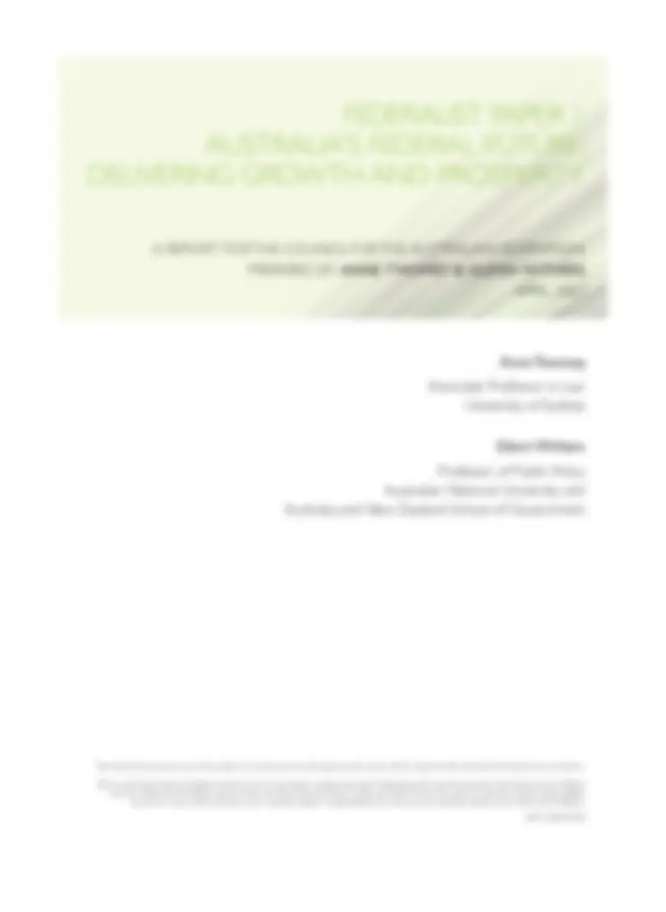




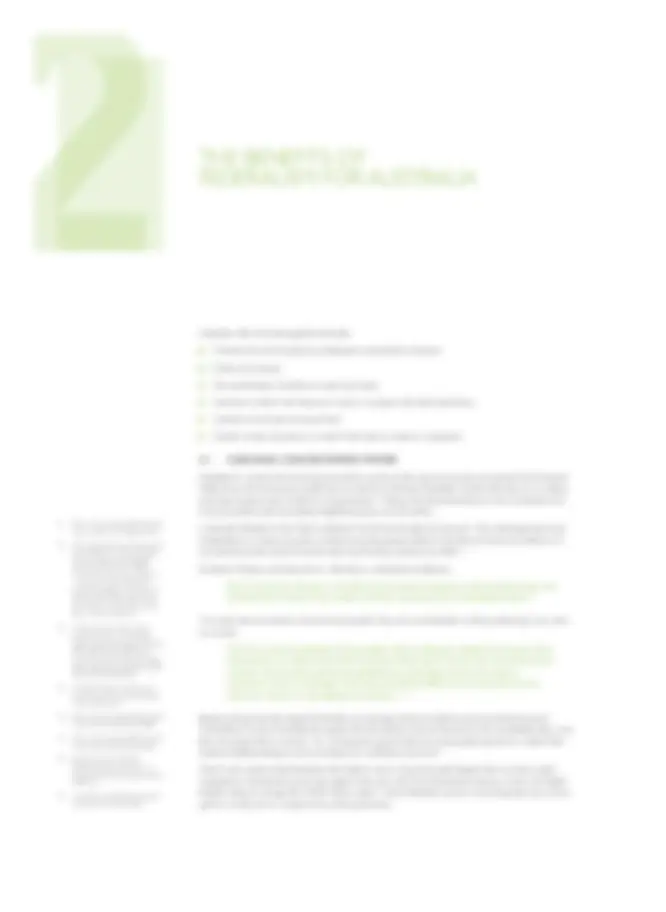







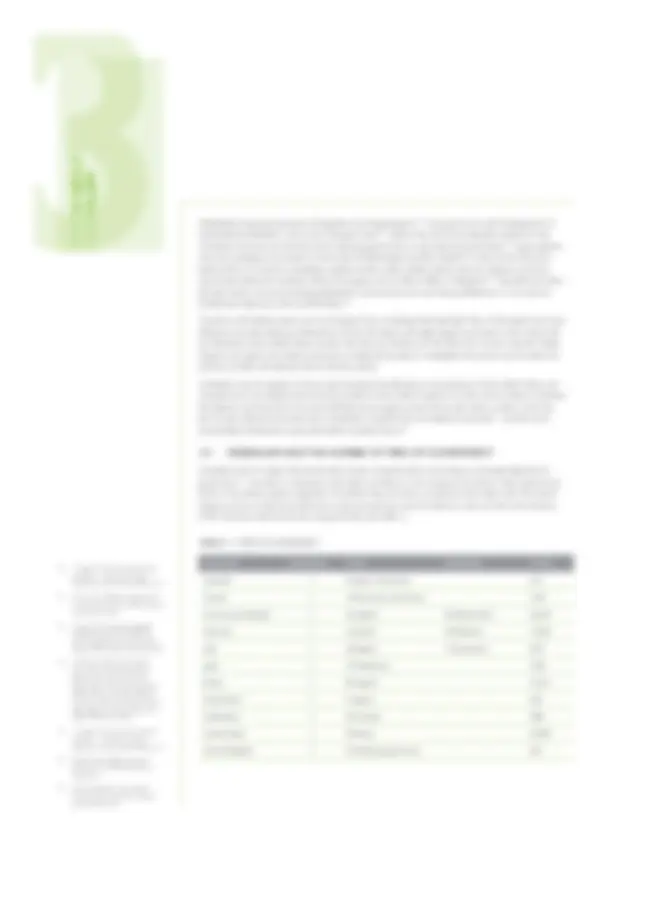









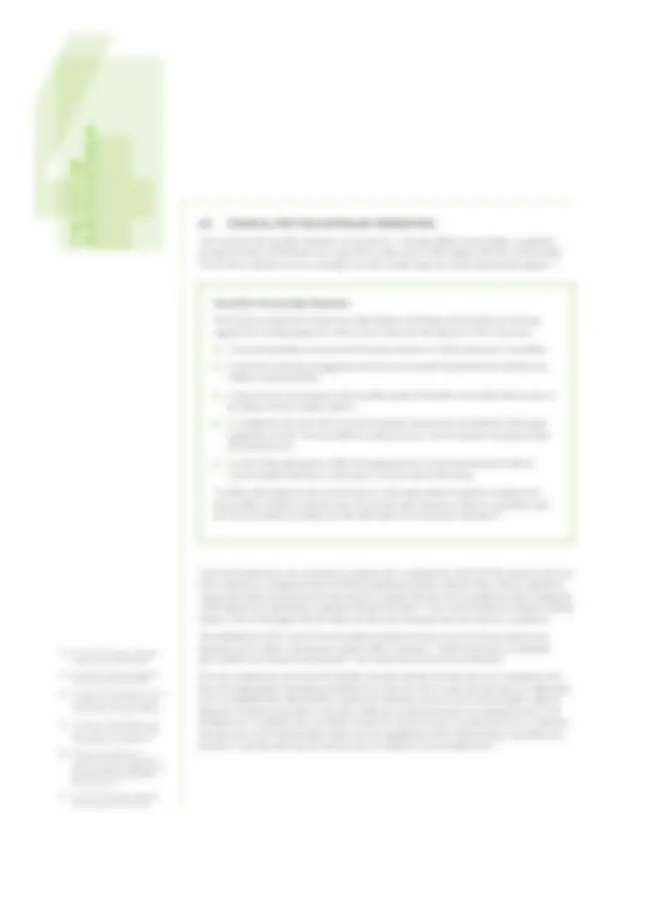

























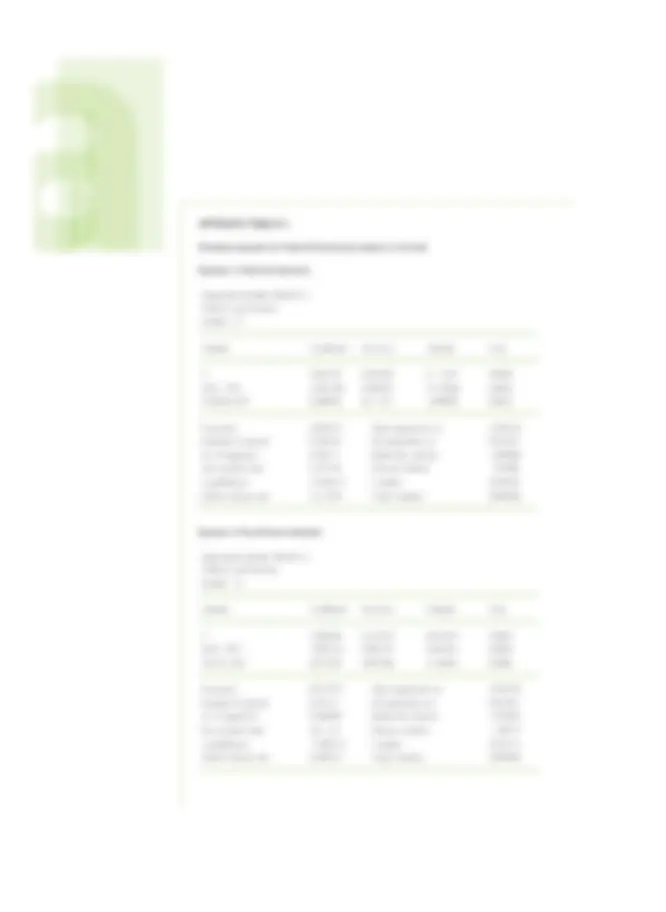





Study with the several resources on Docsity

Earn points by helping other students or get them with a premium plan


Prepare for your exams
Study with the several resources on Docsity

Earn points to download
Earn points by helping other students or get them with a premium plan
Community
Ask the community for help and clear up your study doubts
Discover the best universities in your country according to Docsity users
Free resources
Download our free guides on studying techniques, anxiety management strategies, and thesis advice from Docsity tutors
The complex relationship between the Commonwealth and States in Australia, focusing on the issues of unnecessary administration, co-operation, and the need for clarifying roles and responsibilities. It highlights examples of controversial policies and laws, such as those related to income tax, industrial relations, superannuation, and native title, which have led to criticisms of overcentralization and excessive burdens. The document also explores the potential for consensus on the need to reallocate responsibilities and the implications for federal-state relations.
What you will learn
Typology: Study Guides, Projects, Research
1 / 61

This page cannot be seen from the preview
Don't miss anything!






















































Dear Premier,
On behalf of the Council for the Australian Federation, you asked us to prepare a report on what federalism has to offer Australia today. We are delighted to present our report entitled Australia’s Federal Future.
It became apparent to us in writing this report that Australian attitudes towards federalism are out of step with those in the rest of the world. In Australia, it is often asserted that federalism is an old-fashioned, cumbersome and inefficient system. Yet internationally, federalism is regarded as a modern, fl exible and efficient structure that is ideal for meeting the needs of local communities while responding to the pressures of globalisation. The difference between these two views is stark.
In this report we have used political, legal and economic analysis and international comparisons to highlight that, far from being a burden, Australia’s federal system provides us with many economic and social benefits. For example, federalism:
divides and limits power, protecting the individual; gives Australians a wider range of choices and allows policies and services to be tailored to meet the needs of communities; and spurs all Australian governments to be more innovative and responsive.
Compared to centralised, unitary governments, federal nations such as Australia have:
more efficient governments; and higher rates of economic growth and higher per capita GDP.
These benefits deliver significant economic and social advantages to all Australians. However, increasing centralisation in Australia threatens these benefi ts.
Where there are problems, they are often with the way our federal system operates, rather than with federalism itself. Rather than criticising our federal system, we should be working to make better use of its advantages in order to improve our prosperity. In particular, the reform of the allocation of powers and responsibilities between the Commonwealth and the States, and reform of fiscal federalism, are desperately needed.
Together, the Commonwealth and the States and Territories have achieved a great deal, such as national competition policy and economic reform. This has laid the economic foundations for our current prosperity. It is important that we maintain the health of our federal system and inter-governmental relations in order to support the next wave of reform, the National Reform Agenda, and beyond.
It is our hope that this report sparks a more sophisticated and informed public debate in Australia about federalism. Federalism is a significant part of Australia’s identity and an important source of our prosperity. We have much to gain, as a nation, from reforming our federal system to increase the advantages it offers us. The time for that reform is now.
Anne Twomey Glenn Withers Associate Professor in Law Professor of Public Policy University of Sydney Australian National University and Australia and New Zealand School of Government
■
■
■
■
■
- PAGE < CONTENTS Complaints are often made that federalism is an old-fashioned system that is not competitive in the modern world and involves too many tiers of government and too much duplication. International comparisons suggest that this is not the case. Of the G8 nations (the countries with the eight largest economies in the world), four are federations, seven have at least three tiers of government, and all still manage to compete powerfully on the world stage.
In the last 50 years, federations have consistently out-performed unitary states in economic terms. The more decentralised the federation, the better the performance. Research suggests that federalism may have increased Australia’s prosperity by $4,507 per head in 2006 and that this amount could be increased by another $4,188 or even more if Australia’s federal system were more financially decentralised.
While federalism does give rise to duplication, much of this could be avoided through a better allocation of responsibilities and financial resources between the Commonwealth and the States, with each managing and funding its own responsibilities. Much is made by the Commonwealth of the great financial ‘windfall’ to the States generated by the GST; however, the figures show that in 2006 Commonwealth funding to the States (as a proportion of GDP) was approximately the same as it was before the implementation of the GST in 1996, while the pressures on State expenditure continue to increase. In fact, it is the Commonwealth that has increased its share of tax revenue, gaining a $20 billion annual ‘windfall’ of its own. The implementation of the GST has not changed the fact that the Commonwealth still controls the level of funding to the States. In some cases, as the GST increases, the Commonwealth has simply reduced the amount of specific purpose payments to the States.
Recent trends in Australian federalism show a shift from competitive and co-operative federalism to a system of ‘opportunistic federalism’, where the Commonwealth uses its array of financial and legislative powers to intervene selectively in areas of traditional State responsibility to make ideological or political points. In doing so, the Commonwealth undermines the benefits of federalism and exacerbates problems such as duplication and excessive administrative burdens.
Governments share a responsibility to make the federal system work better. Harnessing the advantages of federalism and taking action to reduce or eliminate the problems in its operation would deliver substantial economic and social benefits to the nation. There are three main areas in which reform is needed:
Reallocation of roles between the Commonwealth and State and Territory Governments to reduce duplication and clarify responsibilities. Improvement in the mechanisms for inter-governmental co-operation. Reform of federal–State financial relations, both in the operation of specific purpose payments and in the level of vertical fiscal imbalance.
Many of these reforms could be achieved through co-operation, and the referral of power where necessary. However, a constitutional convention may be a useful means of reaching consensus on these reforms and proposing any constitutional amendments that could enhance the future operation of the Australian federation.
Australia has much to gain from adopting best practice federalism, with the successful delivery of these reforms estimated to generate an annual ‘bonus’ to the nation of up to $86 billion or more.
1 T Hueglin and A Fenna, Comparative Federalism – A Systematic Inquiry (Broadview Press, Canada, 2006), p 11.
2 R Watts, Comparing Federal Systems in the 1990s (Institute of Intergovernmental Relations, Queen’s University, 1996), p 5. 3 G Arachi and A Zanardi, ‘Designing Intergovernmental Fiscal Relations: Some Insights from the Recent Italian Reform’ (2004) 25(3) Fiscal Studies 325. 4 J Pincus, ‘Productive Reform in a Federal System’, in Productivity Commission, Productive Reform in a Federal System (Roundtable Proceedings, Canberra, 2006), p 25, at p 27.
In Australia, the prevailing trend has been away from federalism towards the centralisation of power. This centralisation has occurred across a range of areas, including industrial relations, water resources and education. This is in contrast to the strong international trend towards federalism and the decentralisation of power.^1 Beyond Australia, federalism is growing in popularity. 2 Federal systems are recognised for cultivating unity through accommodating diversity, bringing government closer to the people, providing more flexible and responsive government, and promoting innovation and greater effi ciency through competition. Federalism is also supported because it strengthens the democratic process by increasing access to and participation in the political system, and checks the potential abuse of power. Governments around the world have responded to the pressures of globalisation by joining supra-national bodies, such as trading blocs, to obtain the economic advantages of globalisation, while at the same time decentralising power and conferring greater functions and responsibilities on sub-national states and regions.^3 This is most evident in Europe, where the abiding principle of the European Union is subsidiarity – which states that responsibility for a particular function should, where practicable, reside with the lowest level of government.^4 Recent reforms in Europe have strengthened the powers and functions of sub-national jurisdictions in both federal and unitary countries.
FEDERALISM IN
THE WORLD TODAY
THE BENEFITS OF
FEDERALISM FOR AUSTRALIA
14 NSW v Commonwealth (2006) 81 ALJR 34, per Callinan J at [775] and [777]. 15 This is particularly so in the absence of a Bill of Rights or a formal separation of powers between the legislature and the executive. See T Hueglin and A Fenna, Comparative Federalism
- A Systematic Inquiry (Broadview Press, Canada, 2006), p 41; and also P Coleman, ‘No wonder state Liberals are confused’, The Australian Financial Review , 7 March 2007, p 63.
16 M Sawer, The Democratic Audit of Australia: Populism vs. Citizen Rights (Democratic Audit of Australia Project, ANU, Audit Paper 6/2006); and H Evans, Democracy: the Wrong Message , (Democratic Audit of Australia Project, ANU, Audit Paper 8/2006).
17 Sir Robert Menzies, Central Power in the Australian Commonwealth (Cassell, London, 1967), p 24.
18 NSW v Commonwealth (2006) 81 ALJR 34, per Kirby J (dissenting) at [558].
19 NSW v Commonwealth (2006) 81 ALJR 34, per Kirby J (dissenting) at [612]. 20 Business Council of Australia, Reshaping Australia’s Federation – A New Contract for Federal-State Relations (2006), p 5.
21 Transparency International, Corruption Perception Index (Berlin, 2006).
Federalism offers Australia significant benefits: Protection for the individual by checking the concentration of power Choice and diversity The customisation of policies to meet local needs Incentives to reform and improve, in order to compete with other jurisdictions Incentives to innovate and experiment Greater scrutiny of policies as a result of the need to achieve co-operation.
Federalism is a system that divides power, ensures scrutiny of the exercise of power and protects the individual. While those who hold power usually have an aversion to sharing it, federalism requires that they do so, making it the ‘least undemocratic’ of all forms of government. 14 Without the federal limitations in the Constitution, the Commonwealth would have plenary legislative power over all matters. In Australia, federalism is the ‘major mechanism’ for the formal dispersal of power. 15 The continuing importance of federalism as a check on power is reinforced by the gradual decline in the informal checks and balances on concentrated power, which some have seen as producing a ‘democracy deficit’. 16 Sir Robert Menzies made the point in 1966 that, as a federalist, he believed: that in the division of power, in the demarcation of powers between a Central Government and the State Governments, there resides one of the true protections of individual freedom.^17
Forty years later, his remarks were echoed by Justice Kirby, who saw federalism as liberty-enhancing 18 and went on to state: This Court and the Australian Commonwealth need to rediscover the federal character of the Constitution. It is a feature that tends to protect liberty and to restrain the over-concentration of power which modern government, global forces, technology, and now the modern corporation, tend to encourage. In this sense, the federal balance has the potential to be an important restraint on the deployment of power… 19
Business groups have also regarded federalism as imposing checks and balances upon government power. The Business Council of Australia has argued that the exercise of power becomes more contestable when more than one government is involved. As a consequence, governments are under greater pressure to defend their decisions publicly, leading to more moderate and considered outcomes.^20 There is also evidence that federations fare better in terms of governmental integrity than do unitary states. Transparency International survey data supports this view, with OECD federations having a 5.4 per cent higher integrity rating on average than OECD unitary states.^21 Under federalism, power is more dispersed and is more open to scrutiny and to comparison by other jurisdictions.
■ ■ ■ ■ ■ ■
22 J Roskam, ‘A single curriculum is not the answer’, The Age, 11 October 2006. 23 G de Q Walker, Ten Advantages of a Federal Constitution (Centre for Independent Studies, Sydney, 2001), p 7; and M Bell, Internal Migration in Australia 1986-1991: Overview Report (AGPS, Canberra, 1995), p 57. 24 J Roskam, ‘Federalism is a safer way’, The Australian Financial Review, 17 November 2006; and R Watts, ‘States, Provinces, Länder, and Cantons: International Variety among Subnational Constitutions’ (2000) Rutgers Law Journal 941, at 944. 25 D Elazar, Exploring Federalism (University of Alabama Press, USA, 1987), pp 251–3. 26 T Hueglin and A Fenna, Comparative Federalism – A Systematic Inquiry (Broadview Press, Canada, 2006), p 52.
Federalism gives people greater choices. People can, and often do, choose to support a government of one political party at the State level and another at the Commonwealth level, because they prefer different approaches to different policy issues. For example, people might vote in favour of one party at the national level because of its policies regarding defence or the management of the national economy, and for another party at the State level because of its policies concerning the provision of services such as education and health, or its approach to law and order. If there is only one central government, all issues are ‘bundled’ into the one election and the choices of the electorate become limited.
Federalism also allows choice and diversity between jurisdictions. For example, if a country has only one education system, which sets inadequate standards or imposes ideological views, there is no escape from that system. However, when each State has its own education system, families can ‘vote with their feet’ and move to another jurisdiction if the system in their State is performing badly or failing to offer the opportunities or resources they desire or need. 22 Over the years, Australia has witnessed significant inter- state migration – due, in part, to the different policies pursued by governments. 23
Similarly, businesses can set themselves up or adjust their activities to benefi t from the jurisdiction with the best economic performance or which best accommodates their particular needs in relation to resources, regulations or qualified employees.
Having governments at both the State and Commonwealth level gives citizens more than one point of access to the system of government. If one level of government ignores them, they can raise their concerns with the other level of government. Even where a level of government is not directly responsible for redressing those concerns, federalism allows them to be raised and debated in the public domain. The existence of more than one Parliament in Australia is important to ensure that matters of public concern are not ignored and can be exposed and debated in a public and privileged forum. Further, where one level of government fails to address policy issues, there is an opportunity for the other level of government to address and remedy that failure. 24
Federalism also ensures that there is diversity in our institutions, as they are not concentrated in a single capital city. Federalism requires the development of a number of capital cities, with all the institutions and services of a capital, such as State Parliaments, libraries, museums, archives and galleries. 25
Hueglin and Fenna have compared France, a unitary state, and Germany, a federation. They pointed out that France ‘has only one dominant cultural, economic and political centre: Paris’. A successful education and career in France almost inevitably requires relocation to Paris. In contrast, they argued that Germany has no dominant centre. Careers are ‘not dependent upon whether they begin in Hamburg, Frankfurt, Munich, Bonn or Berlin’. 26 Similarly, in Australia, Canberra does not dominate the nation as the single city of importance. Federalism helps to ensure that State and Territory capitals continue to thrive and that these capitals, in turn, support and promote regions that might otherwise be neglected by a central government.
33 J Howard, Prime Minister’s Press Conference, Perth, 21 February 2007. 34 I McAllister et al., Australian Election Study 2001 , Canberra: Social Science Data Archives, ANU, 2001, Question G9P1. 35 N Warren, Benchmarking Australia’s Intergovernmental Fiscal Arrangements (Final Report, May 2006), p xxvi. 36 Business Council of Australia, Reshaping Australia’s Federation – A New Contract for Federal-State Relations (2006), p 4.
As Prime Minister John Howard put it after a recent Cabinet meeting in Perth:
It’s great for Cabinets to move around the country and it’s a wonderful opportunity to be reminded again as we constantly are that the centre of gravity of Australia is not the triangle constituted by Sydney, Melbourne and Canberra. And Western Australia has its own nuances and its own particular characteristics of which I have been both familiar and fond over a very long period of time.^33
Certainly, there are wide discrepancies by region in the level of trust in the Commonwealth Government. In the 2001 Australian Election Study^34 the response to confidence in the Commonwealth Government (as indicated in Figure 1) varied significantly by jurisdiction.
FIGURE 1 > CONFIDENCE IN THE FEDERAL GOVERNMENT, BY STATE/TERRITORY, 2001
0
10
20
30
40
50
60
70
NSW
Percentage
Victoria Queensland
SA WA Tasmania
ACT NT
Very Confident Confident Not Very Confident Not at all Confident
Central governments are usually constrained by political, and sometimes legal, imperatives to tax equally and provide common levels of services. The Commonwealth Constitution expressly provides that the Commonwealth cannot discriminate between States or parts of States when imposing tax and may not give preference to one State or any part of a State through any law or regulation of trade, commerce or revenue. However, the application of uniform policies where different preferences and circumstances exist can lead to the ‘underprovision of services in some areas compared with what those communities would prefer, and overprovision in others’.^35
There is a role for the Commonwealth Government in ensuring that all Australian citizens have access to minimum levels of basic services. Beyond that, there should be room for choice. 36
THE BENEFITS OF FEDERALISMFOR AUSTRALIA
37 J Pincus, ‘Productive Reform in a Federal System’, in Productivity Commission, Productive Reform in a Federal System (Roundtable Proceedings, Canberra, 2006), p 25, at 35. See also: G Banks, ‘Inter-State bidding wars: calling a truce’, Speech to CEDA, Brisbane, 6 November 2002, pp 3–4.
38 C Shiel (ed)., The State of the States 2006 (Evatt Foundation, Sydney, 2006); Productivity Commission, Report on Government Services 2007 (Productivity Commission, Canberra, January 2007).
39 J Pincus, ‘Productive Reform in a Federal System’, in Productivity Commission, Productive Reform in a Federal System (Roundtable Proceedings, Canberra, 2006), p 25, at p 36. 40 OECD, Public Management Service,
Another benefi t of federalism is that it leads to competition. The mobility of people across State and Territory borders means that the States and Territories compete with each other to attract business and residents. This competition is largely productive. As the Productivity Commission has pointed out: [I]f some States charge excessive prices for essential services, or allow the reliability of their electricity and transport networks to deteriorate, or levy excessive payroll taxes or allow access to important health and community services to worsen, then better performing jurisdictions are likely to fi nd some firms and households migrating their way. This in turn provides an incentive for governments to improve their performance – to attain a better balance between the burden of taxation and the benefits of public spending; and similarly for regulation. Hence, competition between States on the ‘economic fundamentals’ is an important benefit of a federal system. 37
State and Territory policies are constantly compared against each other.^38 These comparisons are more meaningful than those between different countries, because they are made from a common base.^39 The States and Territories are periodically placed under real political pressure to improve their performance, through innovation or through learning from the successes and failures of other jurisdictions. Without this interaction, comparison and competition, there would be little incentive for a centralised government to reform or take the risk of implementing new ideas, especially when the consequences of failure are more widespread for national reforms. The likely result would be a bloated, complacent and sedentary central bureaucracy.
FIGURE 2 > PUBLIC EMPLOYMENT LABOUR FORCE SHARE: FEDERAL AND UNITARY COUNTRIES, 1999–
0
2
4
6
8
10
12
14
16
18
FederalUnitary
Percentage share of labour force
14.6 16.^
On average, federations are much more economical than unitary states because of the benefi ts of competition over monopoly. Monopolies such as the Australian Wheat Board remind us that the centralisation of power can come at a considerable price. Without internal competition, government is more likely to become inefficient, over-staffed and expensive to run. Figure 2 shows that if federal and unitary states are compared, the average share of public employment in the total workforce increases by almost 11 per cent for unitary states.^40 These figures suggest that if Australia abandoned federalism and became a unitary state – and these averages applied to Australia – the number of public servants might rise by as much as 181,800 persons.
THE BENEFITS OF FEDERALISMFOR AUSTRALIA
45 OECD, OECD Factbook 2006 (Paris 2006).
46 G de Q Walker, Ten Advantages of a Federal Constitution (Centre for Independent Studies, Sydney, 2001), p 33.
47 J Bryce, The American Commonwealth, (Macmillan and Co, London, 3rd ed,. 1893), p 353. 48 J Conybeare, ‘Evaluation of Automobile Safety Regulations: The Case of Compulsory Seat Belt Legislation in Australia’, Policy Sciences , 12, 1980, pp 27–39. 49 A Unglik, ‘Between a rock and a hard place: the story of the development of the EPA’ (EPA, Melbourne, 1996).
FIGURE 4 > STANDARDISED UNEMPLOYMENT RATES: FEDERAL AND UNITARY COUNTRIES, 2004
Federal
6.7 8
Unitary
Percentage share of labour force
(^) In the labour market area, industrialised countries that are federations have a better performance record than unitary states. As seen in Figure 4, using standardised OECD unemployment rates and using the most recent year for which such data are available, unemployment in unitary states is on average 5.8 per cent higher than in federal states.^45 In Australia, the States have been the main innovating forces in reforming political processes, such as changes to electoral laws. Past examples include the secret ballot, votes for women, compulsory voting, proportional voting and lowering the voting age to 18. More recent innovations include four- year terms, fixed terms and measures to avoid the manipulation of ‘above the line’ voting in upper houses. Such measures were only adopted by other Australian jurisdictions after they had an opportunity to see how these measures operated in practice.
One current area of State and Territory innovation is the development of Bills of Rights. The Australian Capital Territory commenced the process with the enactment of its Human Rights Act 2004. This has been followed by the Victorian Charter of Human Rights and Responsibilities Act 2006. Again, other Australian jurisdictions will have the chance to see from the experience of Victoria and the Australian Capital Territory whether the experiment is successful and to improve upon any weaknesses in the way those Acts operate if they choose to implement their own Bills of Rights. Where experiments fail, federalism ‘cushions the nation as a whole from the full impact of government blunders’.^46 Bryce compared a federation with a ship that has watertight compartments: ‘When a leak is sprung in one compartment, the cargo stowed there may be damaged, but the other compartments remain dry and keep the ship afloat.’ 47 In other words, policy mistakes made in one State do not spread throughout the entire country and can be corrected by adopting successful policies from other States.
50 See, for example, the Prohibition of Discrimination Act 1966 (SA). 51 M Mead and G Withers (eds), Privatisation: A Review of the Australian Experience (CEDA, Melbourne, 2002). 52 See, for example, the Memorandum of Understanding with Indonesia on Economic Development Co- Operation, 1992. 53 See, for example, the Subordinate Legislation Act 1994 (Vic.). 54 S Duckett, ‘Casemix Funding for Acute Hospital Inpatient Services in Australia’, Medical Journal of Australia (161) 1998, S17–S21. 55 Western Australia, Department of Treasury and Finance, Discussion Paper on Commonwealth–State Relations (April 2006), pp 9-10. 56 Economic Planning Advisory Commission, Private Infrastructure Taskforce: Final Report , (Canberra: AGPS, 1995). 57 COAG, Users’ Guide to the Mutual Recognition Agreement and Trans-Tasman Mutual Recognition Arrangement (2006). 58 M Keating and J Wanna, ‘Remaking federalism?’ in M Keating, J Wanna and P Weller (eds), Institutions on the Edge? (Allen & Unwin, 2000), p 135. 59 A Third Wave of National Reform
- A New National Reform Initiative for COAG, (Department of Premier and Cabinet, Victoria, August 2005). 60 Victorian Government, Victoria’s Skilled Migration Strategy, 2004– (Melbourne, November 2004). 61 S Salvin, ‘Developing a market in biodiversity credits’, Community Biodiversity Network Newsletter (2000). 62 National Emissions Trading Taskforce, Possible Design for a National Greenhouse Gas Emissions Trading Scheme (August 2006). 63 South Australian Government, Prosperity Through People (Adelaide, March 2004).
State and Territory innovations States and Territories have led reform in Australia at both the State and national level by implementing or campaigning for reform in the following areas: road safety campaigns and the compulsory use of seat-belts; 48 the establishment of the first Environmental Protection Authority in Australia and the second in the world after California; 49 the enactment of various kinds of anti-discrimination laws; 50 the use of commercialisation and corporatisation to improve the performance of government business enterprises; 51 the development of trade relations with Indonesia; 52 the creation of mechanisms for the review of business regulations; 53 the use of casemix funding of public hospitals; 54 the establishment of health care call centres; 55 the development of private financing initiatives; 56 the development of the mutual recognition scheme; 57 the reform of financial regulation; 58 the development of the National Reform Agenda to enhance human capital; 59 the development of regional migration schemes; 60 the development of markets for the trading of salinity credits and biodiversity credits; 61 the creation of carbon rights and the development of a national carbon emissions trading scheme; 62 and the development of population policies. 63
■ ■ ■ ■ ■ ■ ■ ■ ■ ■ ■ ■ ■ ■ ■ ■
Federal systems provide a mix of competition and co-operation. Where competition is not appropriate because too great an overlap exists between functions, co-operation may be needed to achieve outcomes of national significance.
The involvement of more than one government means that that a proposal will receive a great deal more scrutiny than if it were the work of one government alone. Problems with implementing the proposal in different parts of the country are more likely to be identified. Where there is conflict between governments on the nature and detail of the proposal, there is more likely to be a public debate, as different governments are forced to put their positions and justify them in the public domain. While this has the disadvantage of sometimes slowing down reform, the need for co-operation has the corresponding advantage of ensuring that reform, when implemented, is better considered and more moderate in its nature.
Terrorism laws – a case of co-operation and scrutiny
In 2002 the Commonwealth Government sought to enact extensive anti-terrorism laws. As it was not clear whether the Commonwealth had sufficient legislative powers to support its proposed laws, it requested referrals from the States under s 51(xxxvii) of the Constitution. The States agreed to refer to the Commonwealth the matters of the power to enact its proposed law and the power to amend it in the future. This referral was subject to a condition in an inter-governmental agreement and in the text of the law the Commonwealth was empowered to enact: that any amendment to the law be approved by a majority of the States and Territories, including at least four States.
In 2005 the Commonwealth proposed to enact more controversial anti-terrorism laws that included provisions concerning control orders and preventative detention. It could not simply guillotine these laws through the Parliament because it was obliged (politically, and perhaps legally) to seek the agreement of a majority of the States and Territories. This led to significant public debate about the merits of the proposals.
The matter was addressed at the Council of Australian Governments (COAG) in September 2005, where in-principle agreement was reached. Later, substantive amendments were made to the Bill, inserting new safeguards at the request of the States and Territories. Ultimately, fi ve States and one Territory agreed to its enactment.
This case study shows that:
agreement with States and Territories can be reached quickly on important matters of national interest; public debate and scrutiny were enhanced because the Commonwealth was forced to make its case in the public domain to achieve the agreement of States and Territories; the need for inter-governmental agreement proved a moderating force on the legislation concerned; and the resulting laws gained greater legitimacy in the public domain because they were supported by different jurisdictions with governments of different political persuasions.
■
■
■
■
MYTHS ABOUT
FEDERALISM
66 A C V Melbourne, Early Constitutional Development in Australia (UQP, Brisbane, 1963), p 356.
The current debate about the Australian federal system tends to focus upon arguments against federalism, which include the following: Federalism was imposed upon us because of our history, but we would not choose it now. Federalism is a nineteenth-century system of government that is incompatible with globalisation and international competition. Federalism results in too many tiers of government. Federalism is a costly system of government because of the duplication involved. A unitary government would be more efficient and better managed. Federalism gives rise to conflict and buck-passing rather than achievement. Federalism is a failure because even with the GST windfall the States still cannot fulfil their responsibilities. These arguments are addressed below. In some cases, the arguments are misconceived or based upon assumptions that are not borne out in practice. In other cases, the arguments identify genuine problems with federalism in Australia. However, these problems generally could be eliminated or reduced by reforming the way the federal system operates. Every system of government has its failings. A fair assessment balances these failings against the advantages of that system of government, rather than focusing solely on the disadvantages.
It is true that our federal system is the product of Australia’s colonial history. The Constitution was drafted in the 1890s by political leaders of the different Australian colonies who established a Commonwealth Government of limited powers, with most powers remaining in the hands of the States. But it was not simply parochialism or political convenience that caused these leaders to choose a federation. They were well aware of the reasons why six different colonies were established in Australia. When Australia was first settled, the single colony of New South Wales covered two-thirds of the continent. However, it proved impossible to govern people scattered across such vast distances from Sydney. Moreover, people objected to being governed by others who lived so far away from them and knew little if anything of their needs. The people of the Port Phillip District of New South Wales made this point in 1848 by electing (without his knowledge or consent) Earl Grey, the British Secretary of State for the Colonies, as their representative in the New South Wales Legislative Council. Their view was that Earl Grey, living in London, probably knew as much about their circumstances as a Sydney-sider.^66 Earl Grey took the point and Victoria was separated from New South Wales in 1851 and given its own legislature.
■ ■ ■ ■ ■ ■ ■